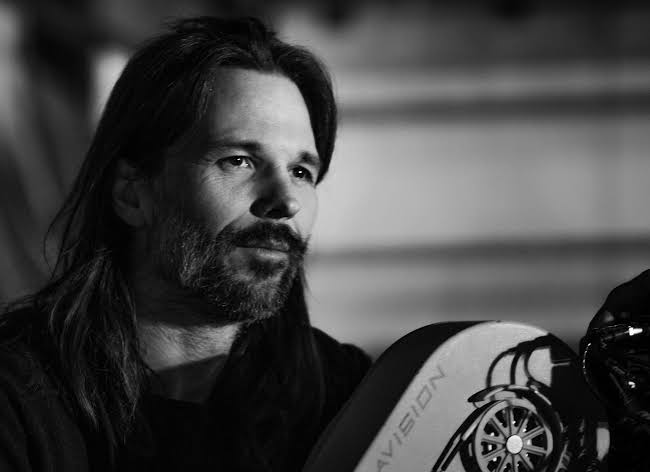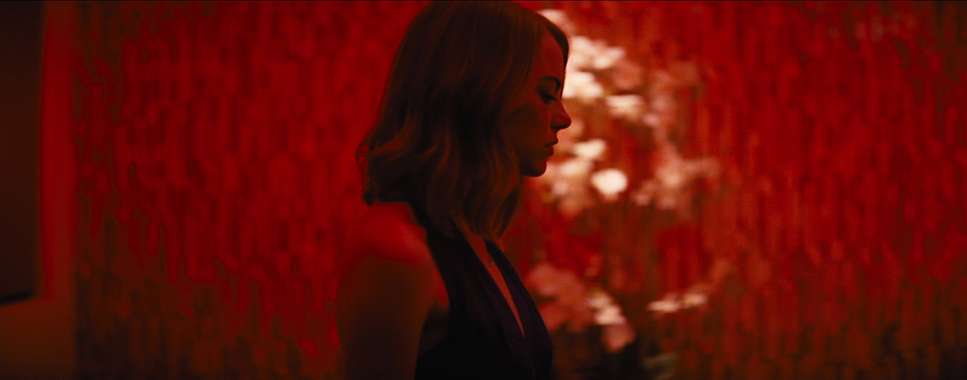My name is Salik Waquas, and I am a filmmaker and a full-time colorist with an undying passion for the art of visual storytelling. Owning a post-production color grading suite has allowed me to explore the intricate interplay between light, color, and emotion in films. Through my website, Color Culture, I delve into the analysis of cinematography in iconic films, sharing my perspective as a professional immersed in the visual language of cinema. One such film that has left an indelible mark on me is La La Land.
Cinematography Analysis Of La La Land
About the Cinematographer

Linus Sandgren, ASC, FSF, the visionary behind La La Land’s cinematography, brought Damien Chazelle’s vibrant musical to life with an artistry that marries classic Hollywood glamor with modern techniques. Sandgren’s work in this film is a symphony of visual storytelling that earned him the Academy Award for Best Cinematography. His collaboration with Chazelle was rooted in a shared vision of balancing realism with fantasy—a hallmark of the film’s narrative. By choosing to shoot on 35mm film in CinemaScope, Sandgren achieved a timeless aesthetic, one that feels both nostalgic and refreshingly modern.
What truly makes his work exceptional is its seamless blend of technical mastery and artistic intent. From sweeping camera movements to the striking use of color and lighting, Sandgren’s cinematography in La La Land is nothing short of a love letter to the golden age of Hollywood musicals.
🎬 A Note from Salik:
I often get asked how I achieve the dense, filmic look in my commercial work. The secret isn't just color grading—it's the starting point. I have finally released my personal Master LUT Pack—8 distinct looks based on real film.
These aren't simple presets; they were crafted using complex math, empirical data, and precise tetrahedral operations to ensure technical integrity. This is the exact collection I've built over the years and used on 200+ high-end commercials.
*Compatible with Davinci Resolve, Premiere Pro, and FCPX.
Inspiration for the Cinematography of La La Land

The cinematography of La La Land draws heavily from classic musicals like Singin’ in the Rain and The Umbrellas of Cherbourg. Sandgren and Chazelle aimed to evoke the escapism and grandeur of these iconic films while adding their unique, contemporary twist. The romanticized portrayal of Los Angeles plays a central role in this vision, transforming the city into a dreamy landscape of vibrant sunsets, lush colors, and iconic landmarks.
This idealized version of LA mirrors the aspirations and dreams of Mia and Sebastian, the film’s protagonists. As I watched the film, I was struck by how the cinematography doesn’t merely depict a setting but creates an emotional resonance that draws the audience into the characters’ world.
Camera Movements Used in La La Land

Dynamic camera movement is one of the film’s defining features. From the moment the opening number, “Another Day of Sun,” bursts onto the screen, the fluidity of the camera immerses us in the world of La La Land. This single-take musical extravaganza, executed with technical precision, sets the tone for the film’s vibrant energy.
As the story progresses, the camera becomes a storyteller in its own right. For instance, in the “A Lovely Night” sequence, the graceful, sweeping movements echo the rhythm of Mia and Sebastian’s budding romance. Conversely, during the pivotal argument scene, the camera adopts a more static, deliberate approach, amplifying the tension between the characters. This balance between dynamic and restrained movement exemplifies how Sandgren uses the camera to reflect emotional nuance.
Compositions in La La Land

The compositions in La La Land are a masterclass in visual storytelling. Sandgren frequently employs symmetry and balance to evoke a sense of nostalgia, while asymmetry is used to highlight discord or emotional complexity. The expansive CinemaScope format allowed for wide, cinematic framing that captures not just the characters but the dreams and conflicts that define them.
One unforgettable moment is the “A Lovely Night” dance number. The wide shot of Mia and Sebastian silhouetted against the Los Angeles skyline is a breathtaking example of how composition can amplify the magic of a scene. Additionally, Sandgren’s use of layered compositions adds depth, allowing the foreground, middle ground, and background elements to interact harmoniously. This technique underscores the intricacies of the characters’ emotional journeys.
Lighting Style of La La Land

Lighting is another cornerstone of La La Land’s visual identity. Sandgren’s use of bold, theatrical lighting gives the film its dreamlike quality. Scenes of romance are bathed in warm, golden hues, while cooler tones dominate moments of introspection or conflict.
The planetarium sequence stands out as a visual marvel. Here, Sandgren uses soft, ethereal lighting to transport the characters—and the audience—into a fantastical realm among the stars. This interplay of light and shadow blurs the line between reality and fantasy, a recurring theme in the film.
Even in outdoor scenes, the lighting feels intentional. The golden-hour glow during the “City of Stars” duet emphasizes the intimacy of the moment, while the stark, unflinching lighting of audition scenes reflects the harsh realities of pursuing one’s dreams.
Lensing and Blocking in La La Land

Shooting on 35mm film with CinemaScope lenses gave La La Land its characteristic aesthetic. The wide aspect ratio not only captures the grandeur of Los Angeles but also allows for creative blocking that enhances the narrative. Characters are positioned within the frame in ways that reflect their relationships and emotional states.
Take, for instance, the scenes of emotional connection between Mia and Sebastian. They are often framed close together, creating a visual sense of intimacy. Conversely, during moments of tension, they are placed at opposite ends of the frame, visually reinforcing their emotional distance. This meticulous blocking ensures that every frame serves the story.
Color Grading of La La Land

As a colorist, I find the color grading in La La Land to be one of its most compelling aspects. The film’s vibrant, saturated palette immediately transports the viewer into its heightened reality. The recurring use of primary colors—red, blue, and yellow—serves as a visual motif, symbolizing the characters’ emotions and journeys.
Mia’s wardrobe, for example, evolves from bright, hopeful hues in her early scenes to more subdued tones as she faces challenges. The color transitions throughout the film mirror the narrative’s emotional shifts. The bittersweet finale blends warm and cool tones, symbolizing the mixture of joy and heartbreak in Mia and Sebastian’s parting.
Technical Aspects of La La Land
From a technical standpoint, La La Land is a marvel. The decision to shoot on film added a texture and authenticity that digital formats often lack. The use of Panavision cameras and anamorphic lenses contributed to the film’s cinematic scope, while the carefully planned lighting setups balanced naturalism with theatricality.
The editing by Tom Cross deserves special mention for its seamless integration with the music. The rhythm of the cuts enhances the film’s dreamlike quality, creating a harmonious interplay between visuals and sound. Justin Hurwitz’s score further elevates the cinematography, making every frame feel like a visual and auditory masterpiece.
Conclusion
For me, La La Land is more than just a film; it’s a source of inspiration. Linus Sandgren’s cinematography is a testament to the power of visual storytelling. Every choice—from the camera movements to the lighting, compositions, and color grading—works in harmony to create a narrative that feels both timeless and deeply personal.
As a filmmaker and colorist, analyzing La La Land reaffirmed my belief in the magic of cinema. It’s a film that invites us to dream, to reflect, and to remember why we fell in love with this art form in the first place. For those of us who live and breathe storytelling, it’s a beacon of what cinema can achieve when artistry and technique unite in perfect harmony.
- Also Read: CINEMATOGRAPHY ANALYSIS OF LADY BIRD (IN DEPTH)
- Also Read: CINEMATOGRAPHY ANALYSIS OF JOJO RABBIT (IN DEPTH)
Browse Our Cinematography Analysis Glossary
Explore directors, cinematographers, cameras, lenses, lighting styles, genres, and the visual techniques that shape iconic films.
Explore Glossary →